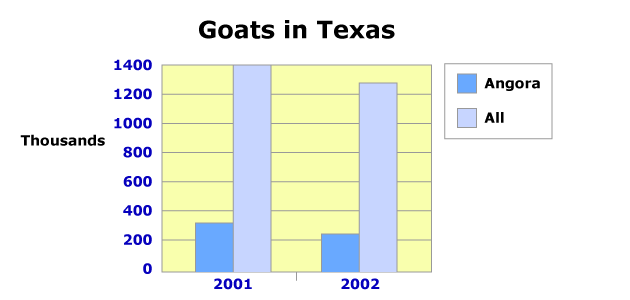Previous Page | Right click this page to print.
Introduction
Today, we will talk about feeding goats. What you see on TV and what you see in the movies are goats will eat almost anything. And they will eat a lot of forage, shrubs, and trees that most other animals won’t eat. But, a lot of what you hear is a fallacy. I heard an interesting quote the other day, or someone sent it to me, and they said, “Half of what you are taught in school is false; it’s your job to figure out what half is true.” So, many of the things that you have seen about goats and their feeding behaviors are actually false.
If you look at goats, they are very well suited to dry climates, rough
terrai, and sparse vegetation. So very arid, desert climates is where
they would thrive versus other livestock species. Goats are raised for
milk, for fiber and also for meat. So they are very unique. If you look
at dairy cows, they are raised for, so mainly for milk or dairy, but they
can also go into the meat gene, right? What about sheep? So, mainly two,
right? So, if you will compare other livestock species, they may give
you one of these or two these. Goats are raised for any one of the three.
They are more important in lesser developed countries versus very developed
countries like the United States. Today, we will spend some time talking
about their feeding behaviors because they are unique compared to other
animals.
Most of the goats in the U.S. are in Texas.

This would be all of the goats in Texas. And so in 2000, there were about 1.4 million goats and the most predominate species at this point was Angora. And Angora goats are grown for what? Their fiber. Now there is a breed that will soon outweigh Angora goats, predominantly in Texas. They are Boer goats and they are from, or they originated in, South Africa and they are meat goats and they have become very popular. Meat goats have a very high reproductive rate, similar to that of sheep. They should, in any one year, reproduce at about 180%. That means every doe will have how many kids? 1.8 on average. They will give about two to four pounds of milk per day and their lactation length is about 120 days. You can breed these meat goats or these meat does twice a year, if you get them bred soon after kidding. But, most people it would be once a year. Angora goats are grown for the mohair, the reproduction rate is much lower, actually the lowest of any of the goat breeds. So about 100%. So, on average they would have about one kid per year.
How many of you have had goat milk or goat cheese? A lot of pizzas you see now, or many pizzas, you have a choice of cheeses. One of those cheeses is a goat cheese. They will produce about 1,500, some of the better dairy goats up to about 3,000 pounds of milk per doe per year. How much does a doe weigh? Maybe 100-125 pounds, lets use 100 because that is a good even number. Now, we are going to express this as a ratio of body weight. So let us say these goats, some of the better average, or the above average goats, about 3,000 pounds of milk. So 3,000 divided by 100 gives you what? 30. So that would be the ratio. What about a dairy cow? Some of the better producing dairy cows would be about 30,000 pounds. What is a Holstein weigh? About 1,500, what is that ratio? It is 20. So if you express it on a ratio, who is more efficient? Goats are very efficient at producing milk. Now, the market or the demand for goat products is not there compared to dairy yet.
Previous Page | Right click this page to print.